Конспект урока «The Romanov Dynasty» по английскому языку для 11 класса
The Romanov Dynasty (11 form)
The House of Romanov was the second and last imperial dynasty of Russia. Its fortunes really began in 1547, when Anastasiia Romanovna Yur'eva married Tsar Ivan IV. Her nephews assumed (принимать) the surname Romanov, and the Romanov Dynasty began with the election of Mikhail Romanov, a 16 year old boyar, by the zemskii sobor. The Romanov family ruled Russia from 1613 to 1855 and during this time Russia became a major empire. The first rulers of this dynasty struggled to end internal disorder, foreign invasion and financial collapse. Mikhail Romanov was a weak ruler, his father Metropolitan Filaret was the real power until his death in 1633. After Mikhail's death, his son Alexis ruled from 1645-1676.
He passed some legislation (законопроект) and represented the gentry (мелкопоместное дворянство) and merchants against the boyars. However, Alexis often deferred to (подчиняться) his boyar advisors who usually did not work for the best of the country and peasant uprisings and Cossack (казачьи) revolts were common. The revolt from 1670-1671 is the most famous. It was led by a Don Cossack named Stenka Razin who became a hero for the common people. He was eventually executed. 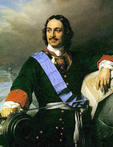
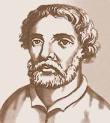
Peter the Great's reign transformed Russia. He strengthened the rule of the tsar and westernized Russia while at the same time making Russia a power in Europe and greatly expanding Russia's borders. During his reign, Russia became an empire and Peter became the first emperor of Russia. Peter spent much time with the foreigners in Russia. He became very interested in western ways and in warfare (приёмы ведения войны). A favorite childhood activity involved directing (управлять) troops he gathered and playing war games. The two troops he started as a child continued to exist and became the elite guard regiments the Preobrazhenskii and Semenovskii. Peter also made two tours of Europe. He was the first Russian ruler to travel outside of Russia. While on these tours he learned about European dress and culture and warfare, especially naval warfare. He learned to do many trades, from shipbuilding to shoemaking. Peter the Great wanted to make Russia more modern militarily, economically and socially, while strengthening the power of the state and of the tsar. One of his most famous measures towards westernization was the order for noble men to shave their beards. Further changes included abolishing hereditary positions with the creation of the Table of Ranks that gave people privileges based on their ability and position within the Table of Ranks. Peter required all men to serve the state. 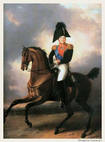
Military campaigns were a large part of Peter's rule. He greatly improved the army and created a navy, even building a ship by himself. The navy Peter had built and the army he created were very effective and Russia's territory grew during his reign. The Great Northern War against Sweden was the longest lasting battle of Peter's reign. This war led to Peter's famous decision to melt the church bells to create cannonballs. These wars were very expensive and the people were forced to pay heavy taxes. In addition, so many people were forced to join the army that their homes often suffered. Peter had St. Petersburg built, and called it his Window to the West.
Peter the Great made another major reform with the Russian Orthodox church. In the past, the church had acted as the moral conscience of the nation and a check on the tsar's power. However, Peter the Great made the church the servant of the state. Also, he created the first universities in Russia.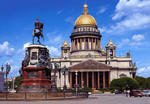
However, Peter died without naming someone to succeed him.
This resulted in a quick succession (порядок наследования) of rulers, Catherine I ruled for less than two years, then Peter II ruled from 1727-1730. He was followed by Anna I, who ruled from 1730-1740 and Anna II who ruled from 1740-1741. These rulers were followed by the relatively long reign of Elizabeth I, Peter the Great's daughter. She reigned from 1741-1762 and under her reign St. Petersburg became a beautiful city. She hired an Italian architect who built some of Russia's most well known buildings. These include The Catherine Palace and the fourth Winter Palace, which is now the Hermitage museum. She was followed by Peter III, who lasted only a few months when, the military sponsored (поддержать) his wife in a coup (гос. переворот) that succeeded and Catherine the Great began her rule of Russia. 
Catherine the Great was a German princess. She married Peter III at the invitation of Peter III's mother, Elizabeth I. At the time of her marriage, she took the name Catherine and became a member of the Russian Orthodox church. Peter III and Catherine the Great were very different. Peter III did not particularly like Russia. Catherine however, wanted to become more Russian. She learned the language and customs and learned about the court. That’s why the royal guard (королевская гвардия) helped Catherine gain the throne. The coup that brought Catherine to power and saw her crowned Empress of all Russia was organized by Count Grigorii Orlov, one of Catherine's lovers. 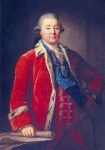
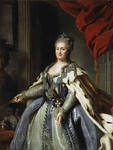
Catherine was a patron of the arts. During her reign, Catherine the Great improved the lives of the nobility while decreasing the status and rights of the peasants and serfs. Catherine was dependent on the nobility for her power. She knew that they had helped her come to power and that if she didn't satisfy them they could plan a coup against her.
During this time, the poor and the serfs lost much of their privileges and revolts occurred. The most famous and largest of the revolts was led by the Cossack Emelian Pugachev and lasted from 1773-1775. It ended when Pugachev was captured and brought to Moscow where he was dismembered and burned. 
Catherine worked to increase education in Russia. She created elementary and secondary schools and universities. Elementary schools were largely private schools that poor people could not afford to attend, and therefore they could get into the secondary schools. Catherine also established a medical commission in 1763 which helped to improve medical conditions in Russia. Catherine helped expand Russia through two Russo-Turkish wars, one in 1768-1774 and one from 1787-1792, through the addition of Ukraine from 1781-1786 and by gaining portions of Poland.
Catherine died in 1796 and was seceded by her son Paul I who ruled from 1796-1801. He was mentally unstable and in 1801 a group of conspirators killed him and his son Aleksandr I became the emperor. He ruled from 1801-1825. Aleksandr I's first act as Emperor had been to announce that he would reign as Catherine the Great had done and his actions proved to the people that he wanted to serve them. While the first years of Aleksandrs' reign brought reforms and improvements, the second half was reactionary. Aleksandr became most interested in religion and began to follow an obscure (тёмный) form of Christianity. Aleksandr also began to believe that Russia needed a larger army and that the best way to do this was to create military colonies. He had farming villages created that were staffed by military. The farmers/soldiers were thus to support themselves through farming and protect the country as soldiers. This system was not very effective. Aleksandr's Minister of Education felt that the only useful knowledge was contained in the bible, and so education also sufferred setbacks (регресс) during Aleksandr I's reign. When Aleksandr died in 1825 he left behind a troubled country for his brother Nicholas. 
During Aleksandr I's reign Napoleon invaded Russia. This event is one of the things Aleksandr I is most famous for. In 1812 Napoleon began his invasion of Russia. His troops were superior in skill and in numbers. Napoleon followed and finally on September 7 in Borodino, a village west of Moscow a battle was fought. The Russians lost and further retreated (отступление) leaving Moscow to be taken. However, by this time Moscow was deserted. Also, Moscow fires left Napoleon's army without both food and adequate shelter. Napoleon finally decided to retreat. He left Moscow and was forced by Russian troops to follow the same route they had used when entering Russia.Napoleon lost his power. Russia had defeated the mighty Napoleon. 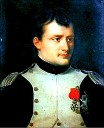
Nicholas I gained the throne of a troubled country in November 1825. He was not the person most of Russia expected to become emperor. Nicholas I's motto became Russian Orthodoxy, autocracy and nationalism. This meant that he upheld (сохранить) the rights of the church. Nationalism favored ethnic Russians over other ethnic groups. The Soviet KGB has its beginnings in this time. One of the Departments Nicholas created was in charge of monitoring (следить) subversive (антиправительственный) groups. This department was the precursor (предшественник) to the KGB. 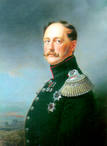
During Nicholas' reign and his successor Aleksandr II's reign some of the most important Russian writers, artists and composers worked. Fyodor Dostoyevsky wrote Crime and Punishment, The Possessed, and The Brothers Karamazov. Aleksandr Pushkin wrote, among other things, The Captive of the Caucasus, The Fountain of Bakhchissarai, Ruslan and Lyudmila, Boris Godunov, Eugene Onegin, and the Bronze Horseman. Nicholas Gogol was one of the best fiction writers. Tolstoy wrote War and Peace, and Anna Karenina. The musician Tchaikovsky wrote 1812 Overture, Nutcracker Suite, Swan Lake, Romeo and Juliet, Eugene Onegin, and Sleeping Beauty. One of the most famous paintings of this time is Ivan the Terrible and the Death of His Son by Ilya Repin.
Nicholas' reign was a very conservative one. He was confident in Russia's military and diplomatic capabilities. However, the Crimean war at the end of his reign made it obvious that reform was needed in Russia. This task came to his son, Aleksandr II. Aleksandr ruled from 1855-1881. He became known as the Tsar Liberator because he freed the serfs. Also, many of the nobles were beginning to think that serfdom should end. Aleksandr II freed the serfs with the Emancipation Act of February 18, 1861. 52 million serfs were freed, this was about 45% of the population. But peasants were still tied to the land. 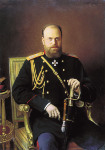
Nicholas made other reforms and together these came to be known as the Great Reforms. The military was reformed and one of the most important changes made to it was to shorten the required time of service for peasants from 25 years to 6 years. The education system also grew. The Ministry of Education created a national system of primary schools beginning in 1864. As people became better educated they became more critical of the government. As people gained freedoms they began to want more changes.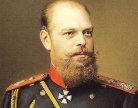
Aleksandr III renewed the policy of Russian Orthodoxy, autocracy and nationalism. Marxism began to grow during Aleksandr III's reign. The Bolshevik and Menshevik groups formed and revolutionary leaders such as Lenin, PLekhanov, Vera Zasulich, Paul Akselrod and Pavel Martov were emerging (Возникать) as revolutionaries. They originally were part of the Labor Party which split to form The Bolsheviks, led by Lenin and the Mensheviks led by Martov. Aleksandr III's son Nicholas II began ruling in 1894 when Aleksandr III unexpectedly died. Nicholas II was a weak ruler and could not successfully rule Russia. Industrialism was finally reaching Russia and a working middle class was emerging. Nicholas II however did not want to allow workers to unite and form unions as they were elsewhere in the world. The people had long believed that the tsar was the protector of his people and so the group was peacefully marching to the tsar carrying icons and portraits of the tsar when Nicholas II refused to meet with them and ordered to have them fired upon. This killed hundreds of innocent people and public opinion turned against the tsar. This event came to be known as Bloody Sunday and helped set off a revolt in 1905. To help calm the unrest (волнение) in the country Nicholas II agreed to the October Manifest which gave people civil liberties and created the Duma.
World War I began in 1914 when Austria declared war on Serbia. Russia went to war to defend the Serbs but was ill prepared for the battle. Problems increased and prices rose dramatically. Women organized themselves to protest high bread prices. Food and fuel shortages and outbreaks of diseases were a major problem. Also, many soldiers deserted. These soldiers were important in a final revolt in 1917, which brought about the end of the Romanov Dynasty. Nicholas II and his family were put under house arrest and in July of 1918 were murdered.
Test (The Romanov Family) 11 form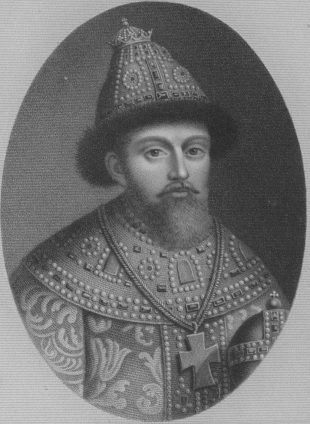
-
The Romanov dynasty began with the election of ………………………………………
-
The Romanov family ruled from ……………………… to ………………………….
-
Mikhail Romanov was a weak ruler, his father ……………………………………………. was the real power until death in 1633.
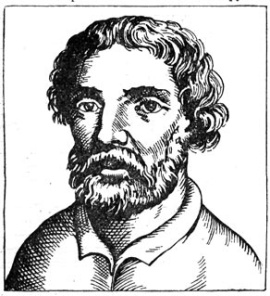
-
The Cossack revolt from 1670-1671 is the most famous. It was led by a Don Cossack named ………………………………. ………………………………… He was executed.
-
Peter the Great’s reign transformed Russia. What were his most fundamental legacies?
-
………………………………………………………………………………………………..
-
…………………………………………………………………………………………………
-
…………………………………………………………………………………………………
-
…………………………………………………………………………………………………
-
…………………………………………………………………………………………………
-
………………………………………………………………………………………………….
-
…………………………………………………………………………………………………..
-
…………………………………………………………………………………………………..
-
Who consolidated Peter I’s reforms? …………………………………………………………
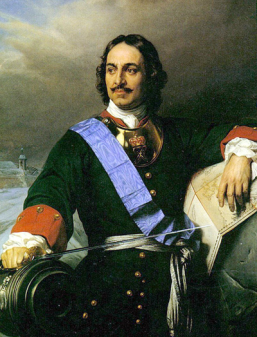
-
Elizabeth I, Peter the Great’s ……………………………….., hired an Italian architect who built
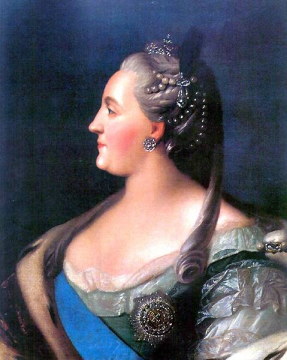
-
The Catherine Palace b) St Basil’s Cathedral c) the Marble Palace
-
Why did the royal guard help Catherine the Great gain the throne and who organized that coup?
………………………………………………………………………………………………………………………………………………………………………………………………………………………………………………………………………………………………………………………………………………………………
-
The famous Cossack revolt (1773-1775) was led by …………………………………….
-
What important event happened during Aleksandr I’s reign and made him famous? ……………………………………………………………………………………………………
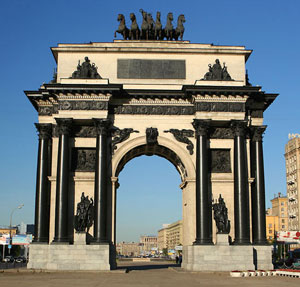
-
During Nicholas’s reign and his successor Aleksandr II’s reign some of the most important Russian writers, artists and composers worked. What are their names? …………………………………………………………………………………………….
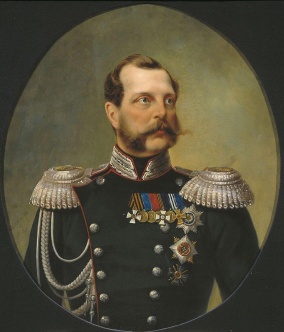
…………………………………………………………………………………………………………………..
-
Who became known as the Tsar Liberator? ……………………………………………….
-
Marxism began to grow during Aleksandr III’s reign. The Bolsheviks were led by ………………………………… and the Mensheviks were led by ……………………
-
A revolt in 1905 is known as a ………………………………………………………, when hundreds of innocent people were killed by the order of the tsar.
-
A final revolt was in …………………………. which brought about the end of the Roman Dynasty.
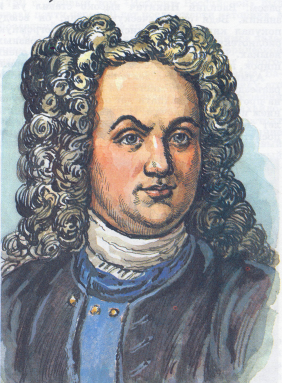
-
One of the prominent Russian statesman and ethnographer, who wrote the first sketch of Russian history, entitled “Russian History Dating Back to the Most Ancient Times, was
-
Derzhavin b) Lomonosov c) Tatishchev
Здесь представлен конспект к уроку на тему «The Romanov Dynasty», который Вы можете бесплатно скачать на нашем сайте. Предмет конспекта: Английский язык (11 класс). Также здесь Вы можете найти дополнительные учебные материалы и презентации по данной теме, используя которые, Вы сможете еще больше заинтересовать аудиторию и преподнести еще больше полезной информации.

